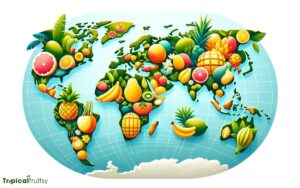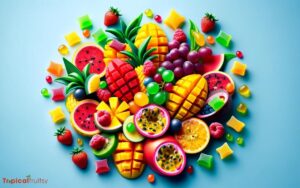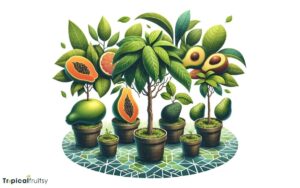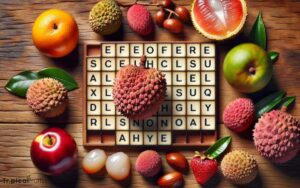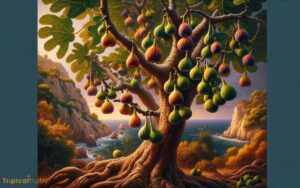What Fruits Are in the Tropical Rainforest? Explained!
Tropical rainforests are teeming with a wide array of fruit species that are as nutritious as they are diverse.
Key examples include the antioxidant-rich acai berry, the uniquely flavored durian known as the ‘King of Fruits’, the sweet and versatile papaya, the intriguing and tasty mangosteen, and the staple breadfruit, which is a crucial food source in many tropical regions.
Tropical rainforests offer optimal growing conditions for many fruit species, including:
These fruits are not only important for local wildlife but also have cultural and economic significance for the people living in these regions.
Discover the exotic flavors of the rainforest with fruits that offer a blend of health benefits and cultural significance.
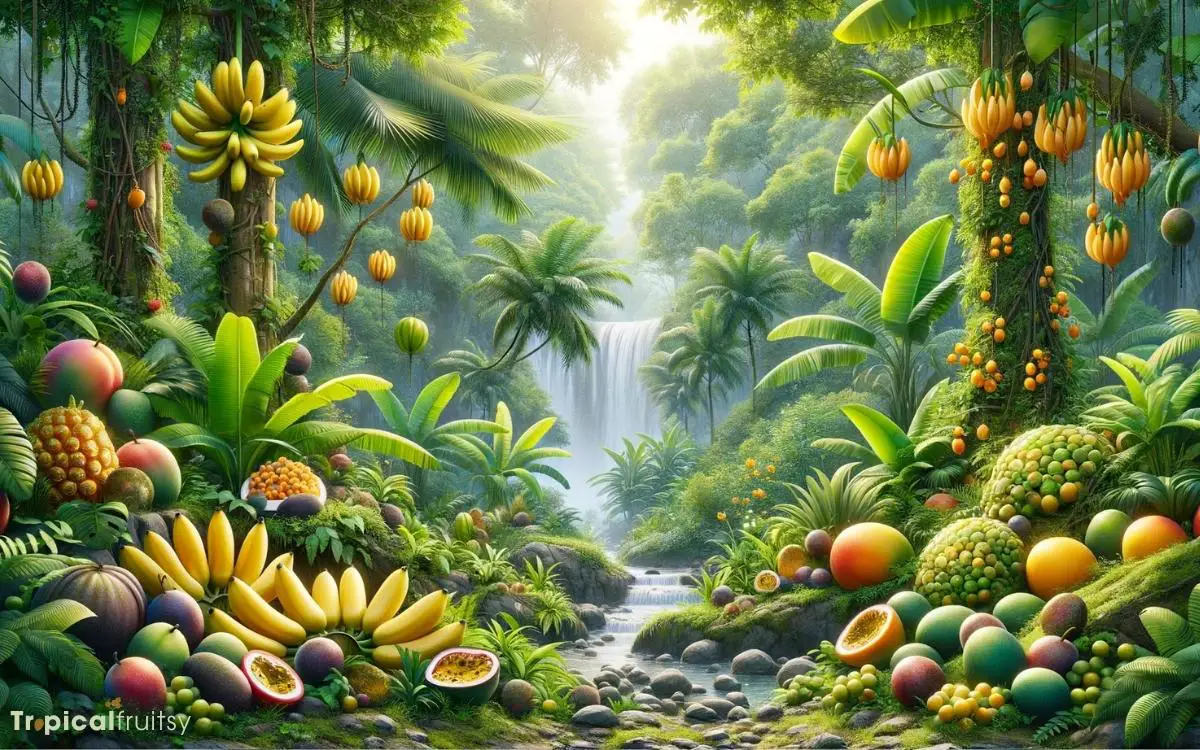
Key Takeaway
Assorted Tropical Fruits Comprehensive Chart
| Fruit Name | Description | Nutritional Benefits | Cultural Significance |
|---|---|---|---|
| Acai Berry | Small, dark purple fruit with high antioxidant content. | Rich in antioxidants, fiber, and heart-healthy fats. | A staple in Amazonian diets; often used in bowls and smoothies. |
| Durian | Large, spiky fruit known for its strong odor. | High in calories, vitamins C and B, and dietary fiber. | Revered in Southeast Asia as the ‘King of Fruits’; a symbol of luxury. |
| Papaya | Soft, orange fruit with black seeds in the center. | Excellent source of Vitamin C, A, and digestive enzymes. | Common in tropical regions; used in salads, smoothies, and desserts. |
| Mangosteen | Round, purple fruit with a white, juicy interior. | Contains powerful antioxidants called xanthones. | Often eaten fresh; regarded as a delicacy in various cultures. |
| Breadfruit | Large, green fruit with a starchy texture. | Provides carbohydrates, fiber, and essential nutrients. | A versatile food source; can be roasted, fried, or boiled. |
The Alluring Acai Berry
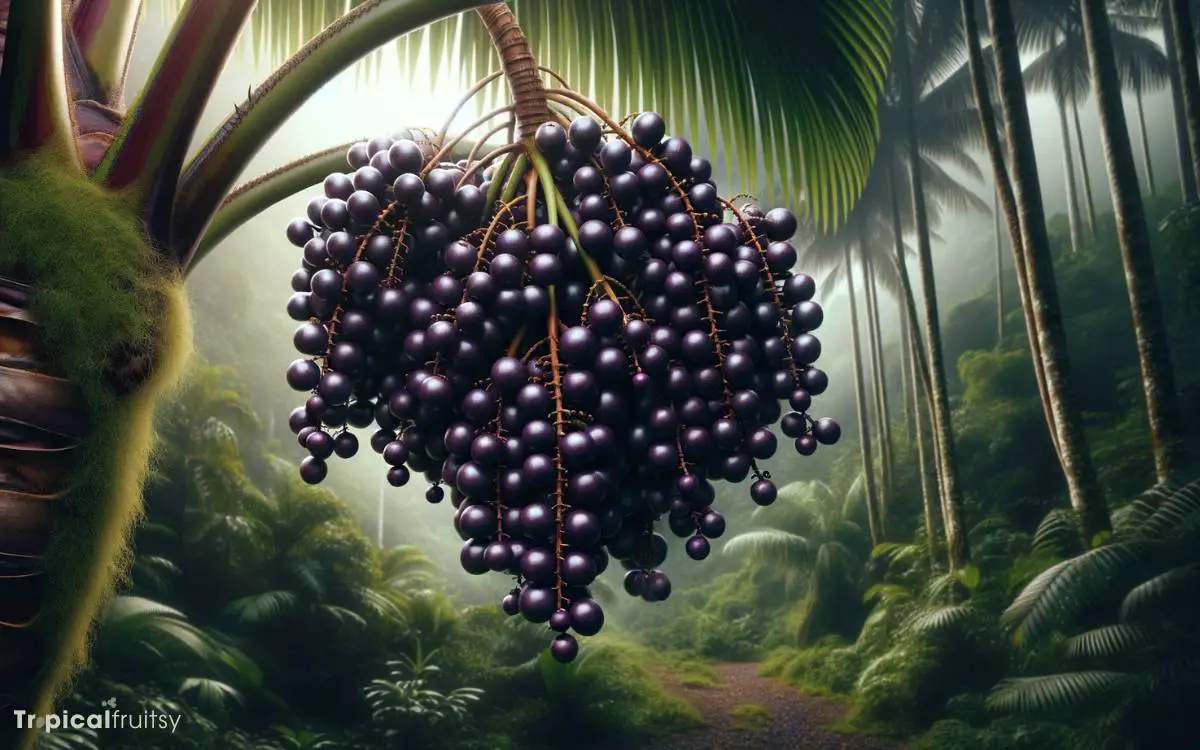
The acai berry, a small, dark purple fruit, thrives in the Amazonian rainforests and is renowned for its nutritional richness and antioxidant properties.
This potent superfruit is a staple in the diet of local communities and has gained international acclaim for its health benefits.
Scientifically known as Euterpe oleracea, the acai berry contains a high concentration of anthocyanins, which are compounds that contribute to its deep color and are associated with heart health and reduced inflammation.
Culturally, acai plays a significant role in indigenous Amazonian cuisine and economy, often harvested using traditional methods that support sustainable forestry practices.
As we turn our attention from the understory of the rainforest to its emergent layer, we encounter another intriguing fruit, the durian, often revered as the ‘king of fruits’.
Durian: The King of Fruits
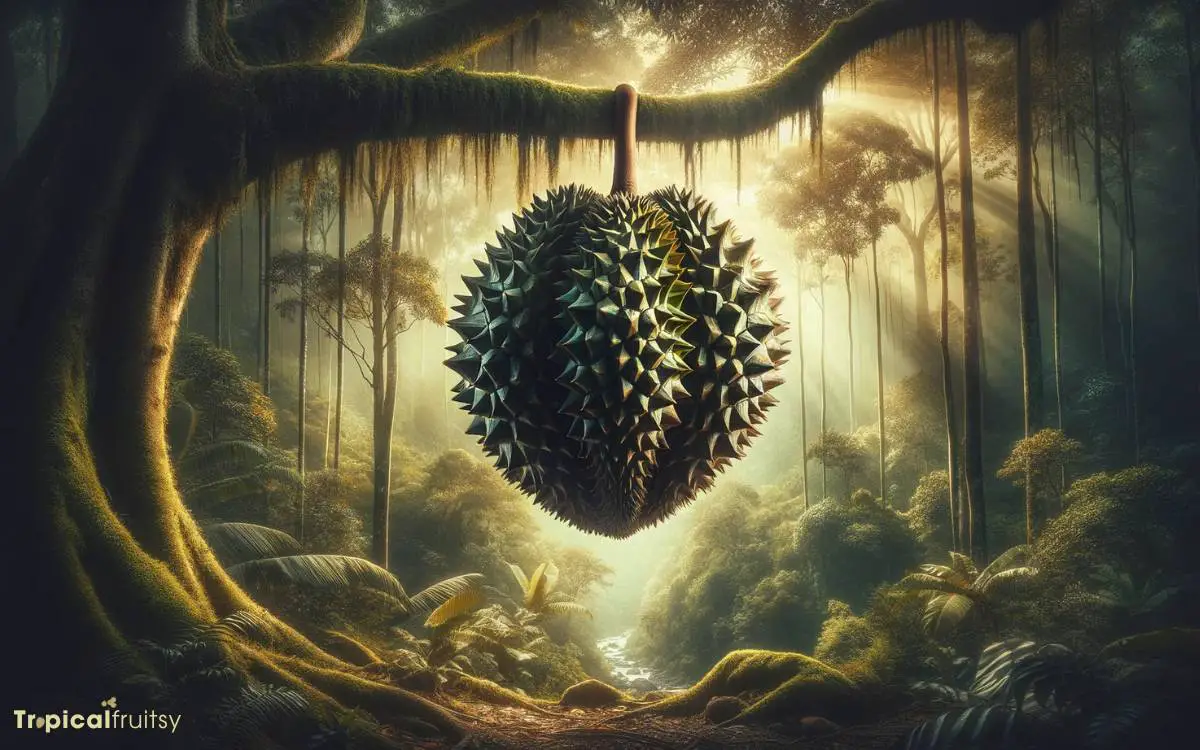
Durian, Southeast Asia’s formidable ‘king of fruits,’ stands out not only for its size but also for its distinctively strong aroma and thorn-covered husk. This tropical fruit is botanically known as Durio zibethinus.
Its unique scent, often described as a mix of savory, sweet, and creamy notes, can be overpowering and is a polarizing aspect that elicits diverse reactions.
Durians have a rich custard-like pulp, encased in a hard exterior, which is loaded with nutrients such as potassium, dietary fiber, and vitamin C.
Culturally, durian holds a place of prestige in social events and is a symbol of wealth in many Southeast Asian traditions. Despite its intimidating presence, durian is deeply revered and celebrated.
Exotic Papaya Varieties
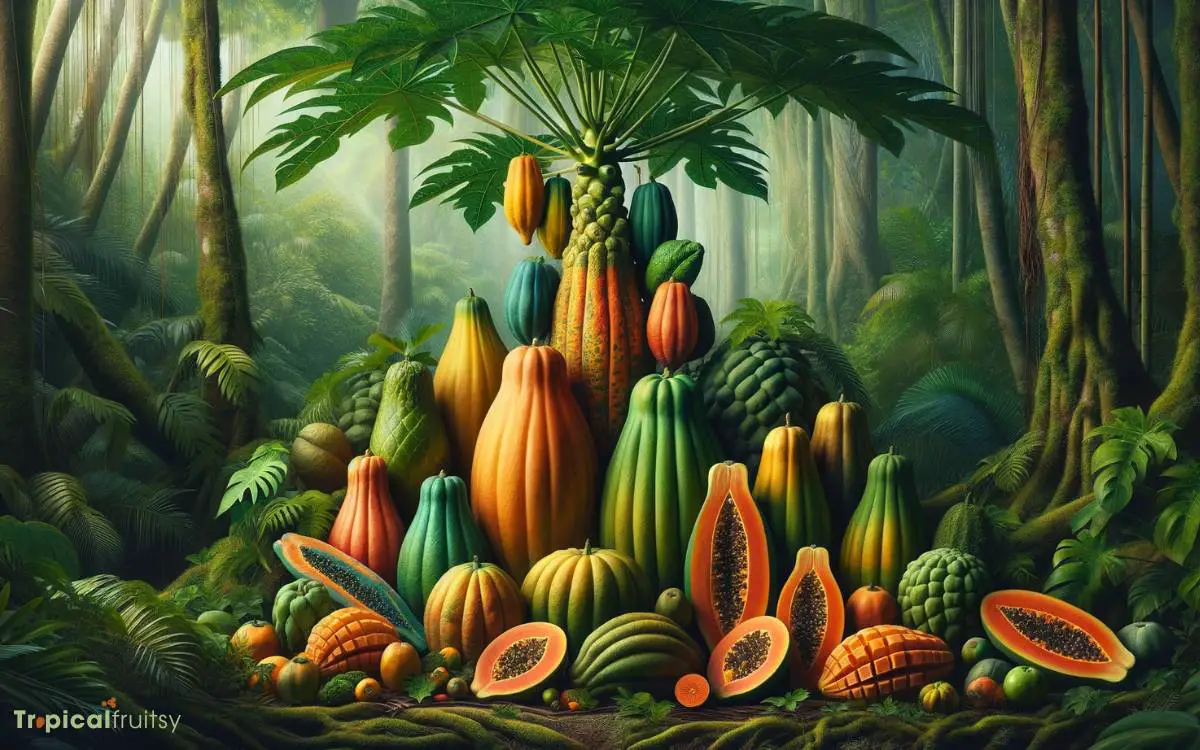
Seamlessly, the conversation shifts from the pungent durian to the diverse world of papaya, a fruit commonly encountered in tropical rainforests and cherished for its sweet, melon-like flavor.
In the rich tapestry of the rainforest, papaya varieties flourish with remarkable differences in taste, size, and nutritional content.
To emphasize the diversity among papayas:
- Carica papaya – The most widely cultivated species, known for its large, sweet fruits that are often yellow when ripe.
- Mountain papaya (Vasconcellea pubescens) – A smaller, high-altitude cousin with a more intense flavor, often found in Andean regions.
- Babaco (Vasconcellea × heilbornii) – A naturally occurring hybrid with a champagne-like effervescence and elongated shape.
These exotic varieties reflect the adaptability of papayas to different microclimates within the rainforest ecosystem, each contributing to local diets and economies.
Mystical Mangosteen Revealed
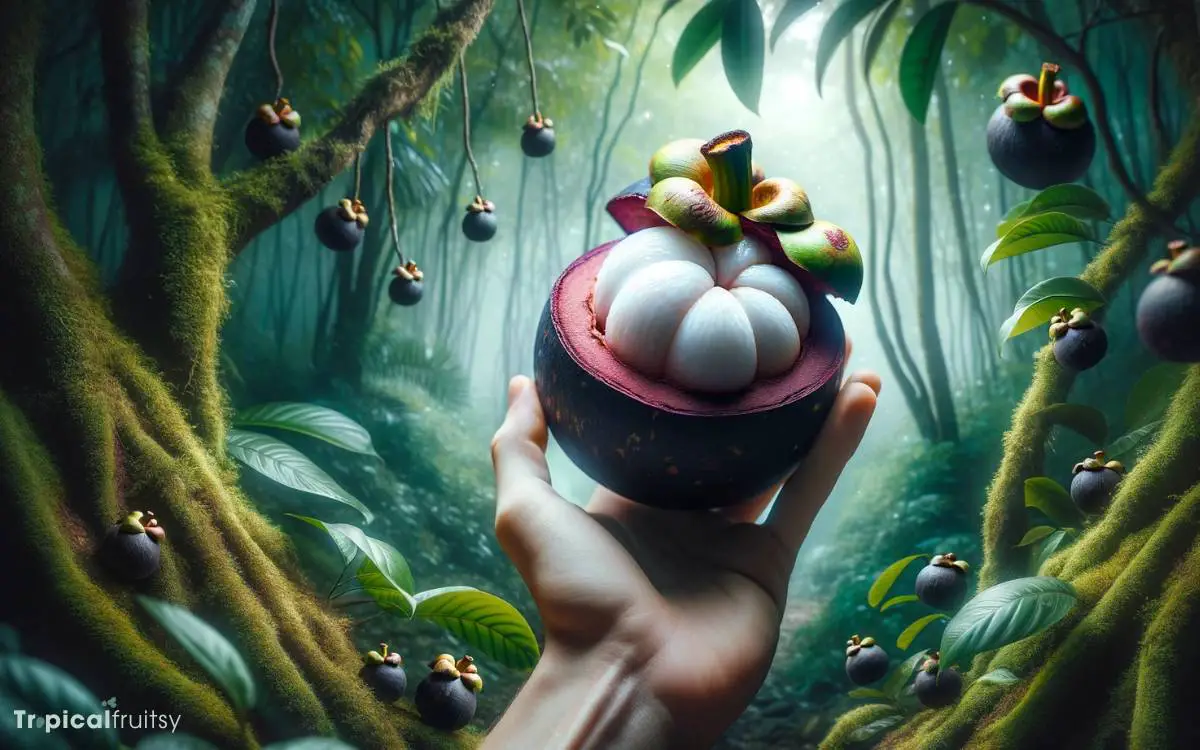
Diving into the heart of tropical diversity, the mangosteen emerges as a fruit enshrouded in both mystery and reverence, boasting a unique flavor that captivates those fortunate enough to taste it.
Scientifically known as Garcinia mangostana, this evergreen tree bears fruit with a deep purple rind and soft, white segments within, often compared to a citrusy peach with hints of creamy strawberry.
Revered as the ‘Queen of Fruits’ in parts of Southeast Asia, the mangosteen’s cultivation and natural occurrence are confined to warm, moist environments, making it a true jewel of the rainforest.
Culturally significant and nutritionally rich, the mangosteen contains powerful antioxidants known as xanthones, which have been linked to anti-inflammatory properties and various health benefits, underscoring the fruit’s mystical allure.
How Do the Tropical Fruits in Florida Compare to Those in the Tropical Rainforest?
Tropical fruits in Florida thrive in a subtropical climate, offering a wide variety including oranges, mangos, and avocados. In contrast, the tropical rainforest yields an even more diverse range of fruits such as bananas, papayas, and guavas. Both regions showcase an abundant array of delicious and exotic fruits.
The Versatile Breadfruit
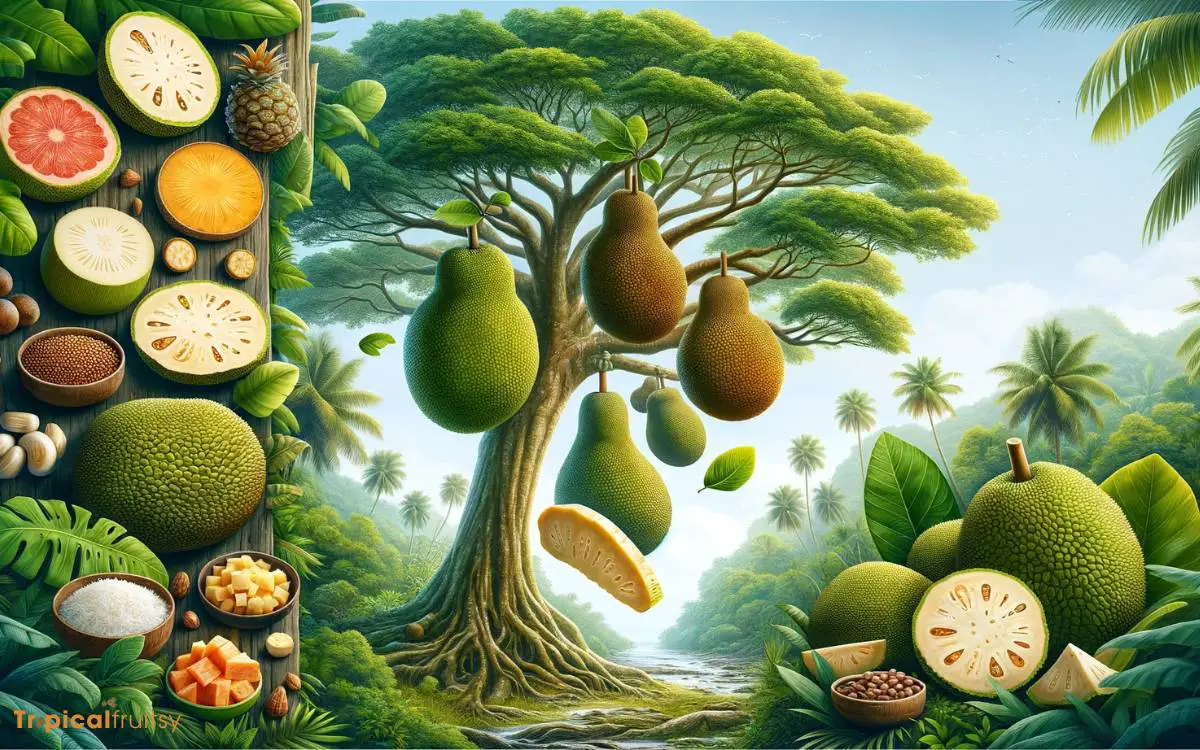
One of the most resourceful plants in the tropical rainforest is the breadfruit tree, whose large, nutrient-rich fruits serve as a staple food in many cultures.
The breadfruit is remarkable not only for its culinary versatility but also for its role in ecological and cultural sustainability.
Originating in the South Pacific and the Malay Peninsula, it has been widely distributed across tropical regions.
The significance of the breadfruit can be summarized as follows:
- Nutritional Value: High in carbohydrates and an excellent source of dietary fiber, vitamins, and minerals.
- Ecological Impact: Its cultivation supports agroforestry systems that enhance soil health and biodiversity.
- Cultural Importance: Breadfruit features in traditional dishes and often symbolizes prosperity and connection to the land in various cultures.
This multifaceted fruit continues to be a cornerstone for food security and cultural identity in the tropics.
Conclusion
In the verdant tapestry of tropical rainforests, a myriad of fruits flourish, each a testament to nature’s bounty.
The acai berry, durian, papaya, mangosteen, and breadfruit represent a fusion of ecological wonders and cultural treasures.
These fruits not only sustain a diverse array of wildlife but also embody the symbiotic relationships intrinsic to these ecosystems.
In the realm of the rainforest, each fruit is a jewel, a vital thread woven into the fabric of life’s rich mosaic.


